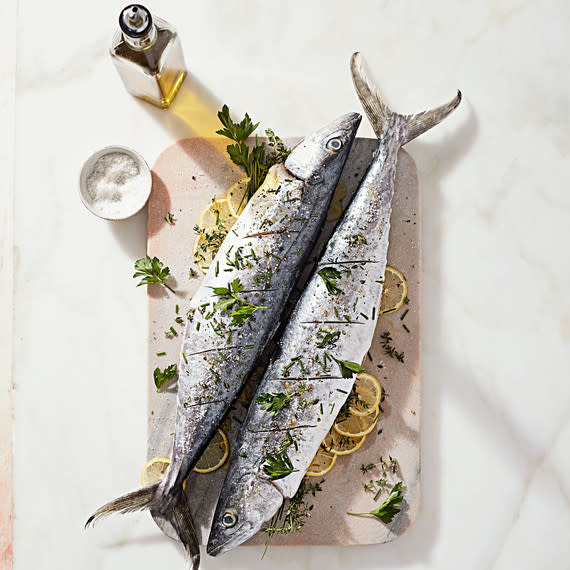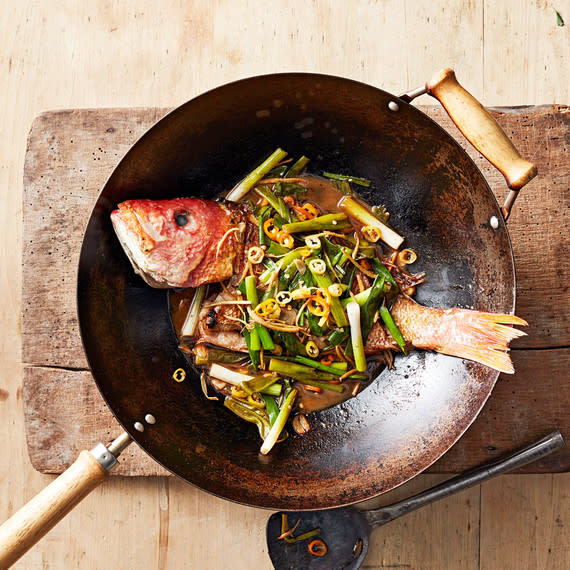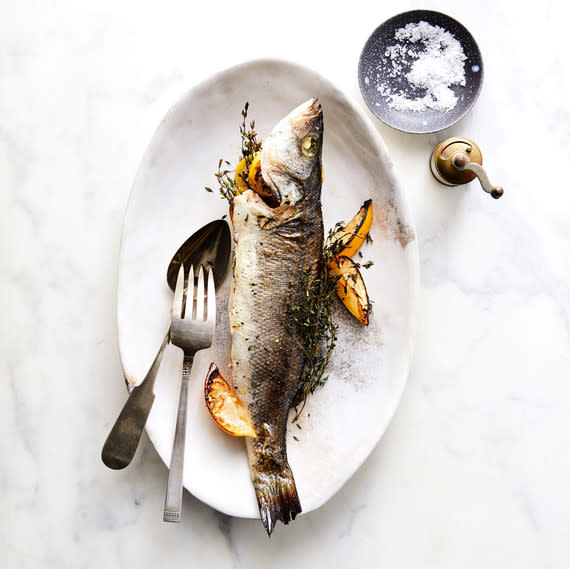This Is Why You Should Cook Whole Fish—Plus, How to Do It

Many people are intimidated by the prospect of cooking whole fish. Really there is no need because cooking whole fish is about as easy and no fuss as fish cookery gets. A whole roasted fish is a simple preparation for a weeknight dinner and it's also a great choice for a dinner party, combining ease of preparation with dramatic presentation. An added bonus is that cooking fish on the bone yields extra succulent and flavorful meat.
Related: How to Grill a Whole Fish—Our Step-by-Step Guide
What to Look for When Buying a Whole Fish
A great advantage to buying whole fish rather than fillets or steaks is that you're really able to determine the freshness and overall quality of the fish. First, look for fish with clear, plump eyes—avoid any fish with eyes that are cloudy, sunken or dried out. Then, consider the gills. Bright or bright red gills are ideal. Brown or gray should be avoided. Consider the fish's flesh, too. Frim and spring to the touch is ideal. Last but not least, take smell into account. Your fish should smell fresh and clean, not strongly of fish.
Related: Nine Ways to Cook Fish

The Best Types of Fish to Buy Whole
I like to use a nice round fish for cooking whole, though you can certainly cook flatfishes whole, too. Here on the East coast black bass, porgy, red snapper, and bluefish are a few of the local wild fishes that are excellent prepared whole. Sustainably farmed trout or arctic char are other great choices.
Cleaning a Whole Fish
Any fishmonger worth their salt will be able to clean a whole fish for you. Cleaning a fish means the fish will be thoroughly scaled and gutted (gills and viscera removed and body cavity rinsed well). Then the fish is ready to cook.
How Much Fish to Buy?
The yield of edible meat on most whole fishes is between 35-45%, so you'll want to plan on buying about one pound of whole fish per person. You can cook smaller individual fish for each person or a larger fish for your crowd.

Cooking Whole Fish
Roasting is my go-to method for cooking whole fish indoors. I crank up the oven to 450-500° F. High heat cooks the fish quickly, producing nice caramelization on the exterior of the fish and juicy flesh inside. When roasting a whole fish, start by lining a baking sheet with parchment paper, which makes cleanup easier. Then, season the fish inside and out with salt and pepper. Stuff the fish's cavity with herbs like parsley, thyme, fresh bay, or oregano, and a few lemon slices for flavor, then drizzle the fish with olive oil inside and out and place in the oven.
How to Know When a Whole Fish Is Cooked
Every fish will cook a little differently based on its size and your oven. The fish will be done when an instant-read thermometer reads 135°F when inserted into the thickest part of the fish (the fleshy part behind the top of the head). If you don't have an instant-read thermometer, cut into this part of the fish and take a peak: The flesh should be opaque close to the bone. When the fish is done, remove it from the oven and let it rest for five minutes before plating and serving.

